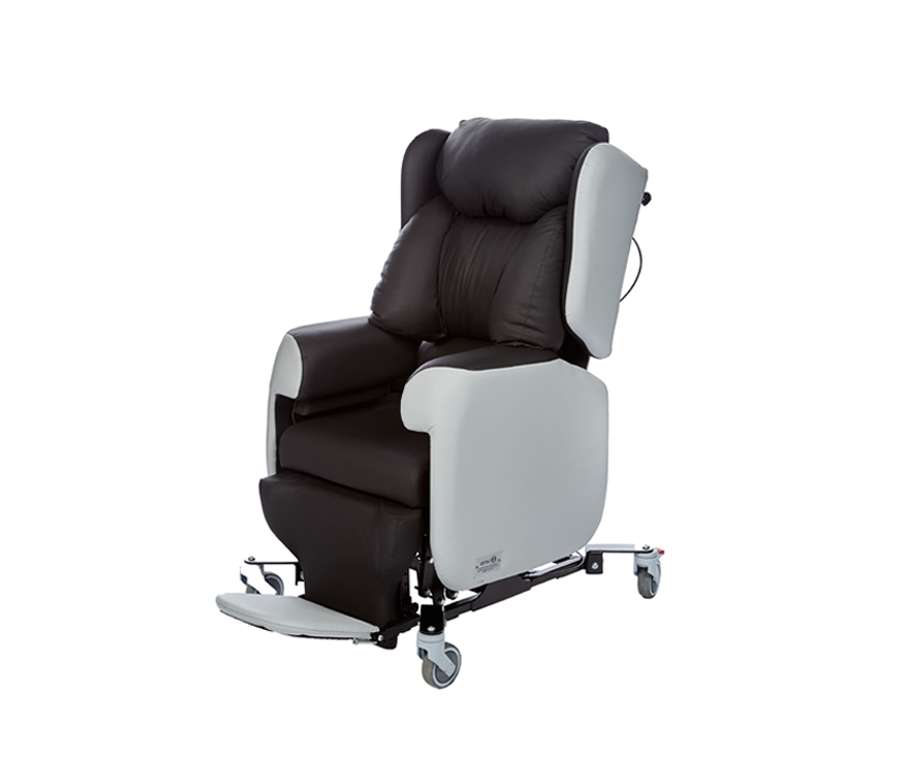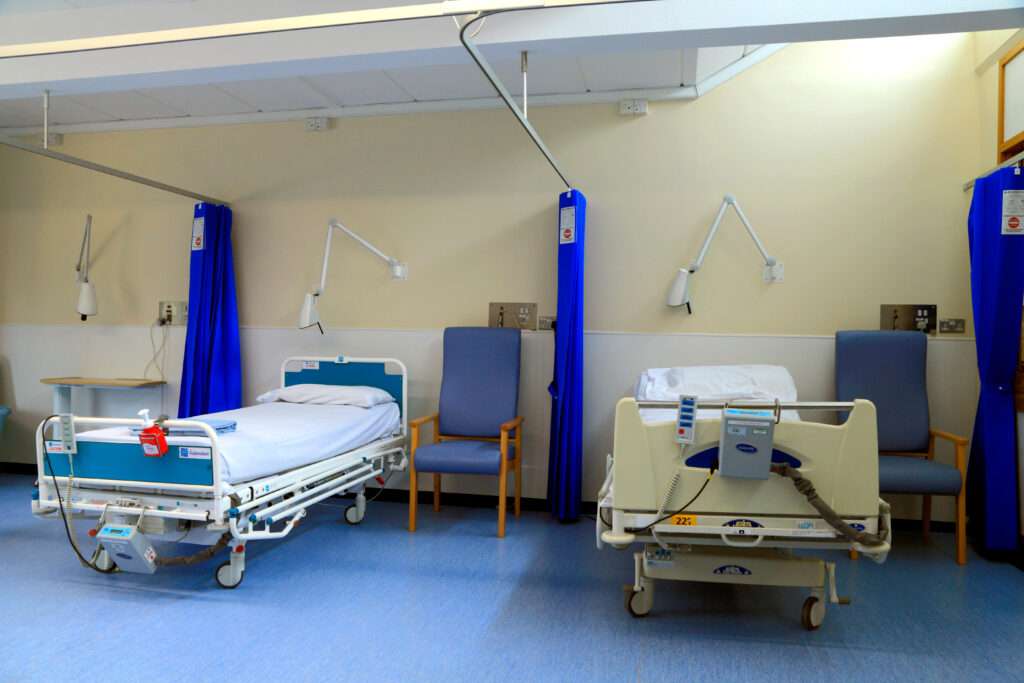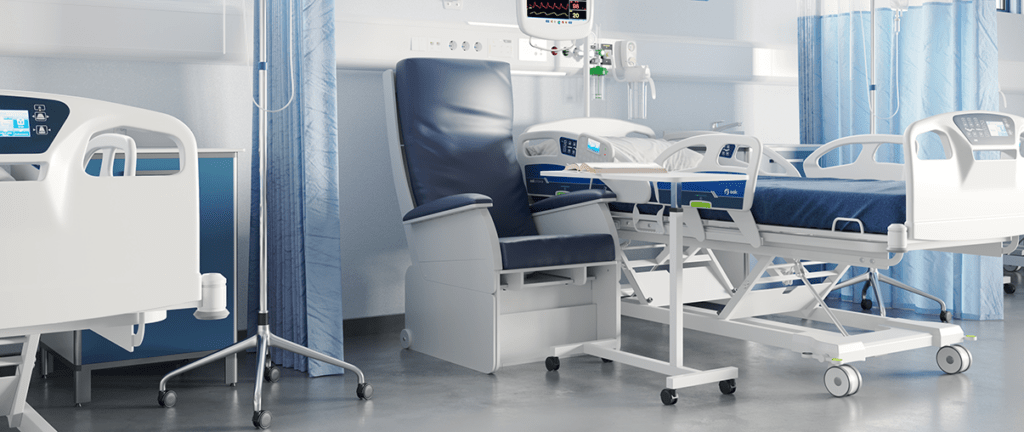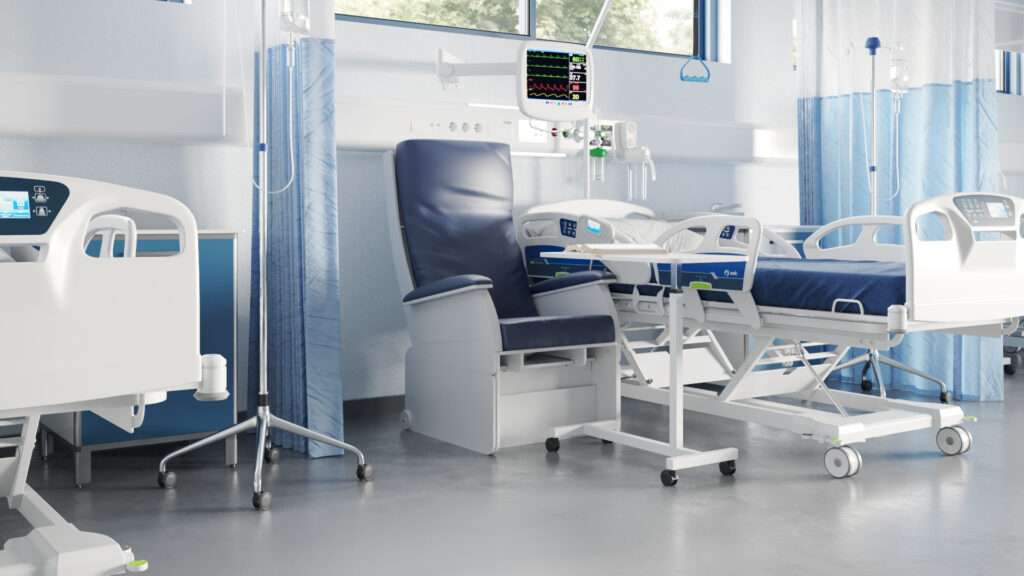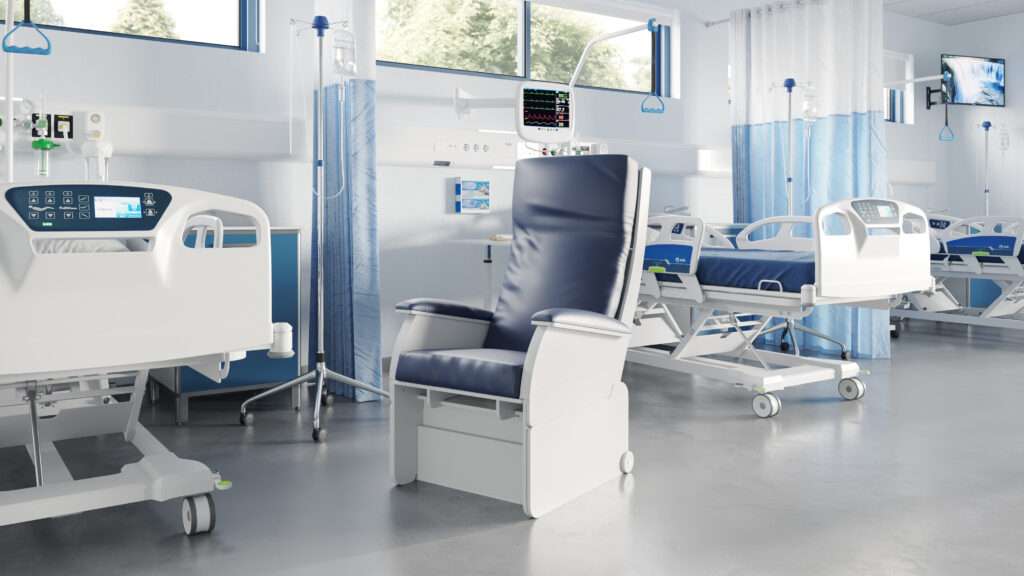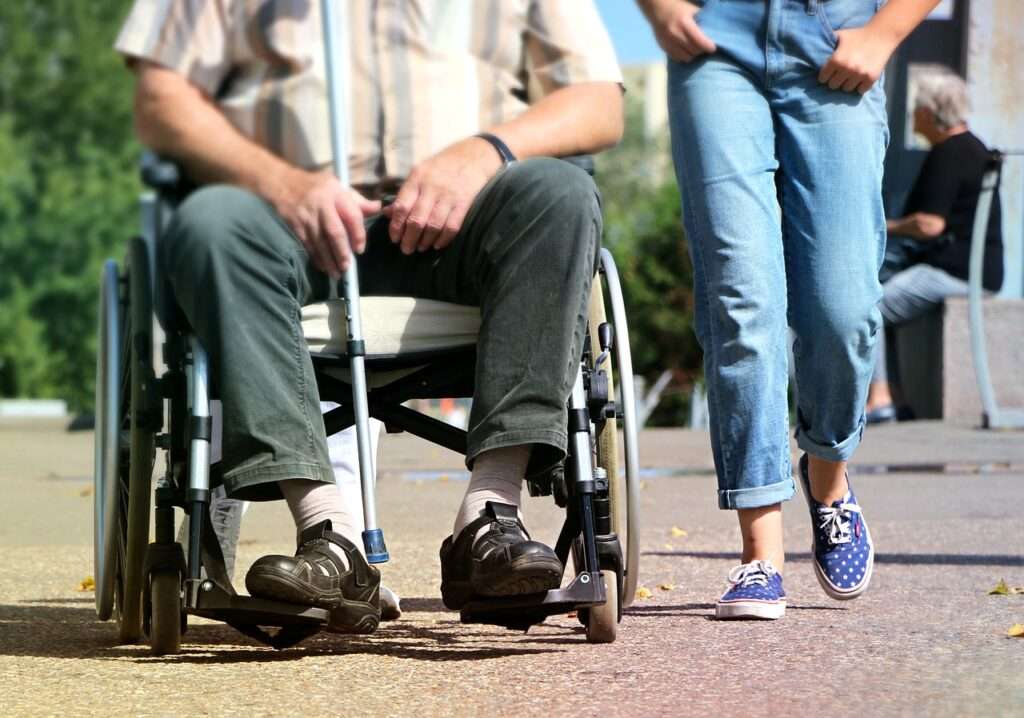When you’re working with paediatric clients, there are extra things to consider in specialist seating and care chairs for children. Children will need care chairs that can adapt over time to suit their needs as they grow and progress; they may also need extra things in place to keep their posture as healthy as possible.
Here are a few things to consider when specifying a care chair for a child.
Jump straight to…
Using Harnesses
Paediatric clients also tend to move around and wriggle a lot more than adult ones, and so you may want to consider utilising harnesses in their care chairs. We always suggest that you think carefully about whether or not a harness is completely necessary to the client and their safety.
With children, harnesses are often used to make sure that they don’t slide out of the chair.
You may wish you use a chest harness, a pelvic harness, or both of these together to make sure that the client has a suitable amount of support. For a children’s care chair that is suitable to use with harnesses, we would recommend the Duo Mini chair.
Adjustable Care Chairs for Children
When specifying a care chair for a paediatric client, you’ll want to think of chairs that can offer support to the individual for as long as possible. This means finding a care chair that can be adjusted to meet the child’s needs and physical size as they change over time.
The paediatric Legacy chair is an excellent option for this. It has adjustable seat width, depth, height, and armrest height amongst other features.
This means that you can adjust and change the chair as the child grows. What’s more, the support cushions can also be changed to cater to varying needs and postural presentations.
So as your client’s need progress or regress over time, the chair can be changed to meet their requirements.
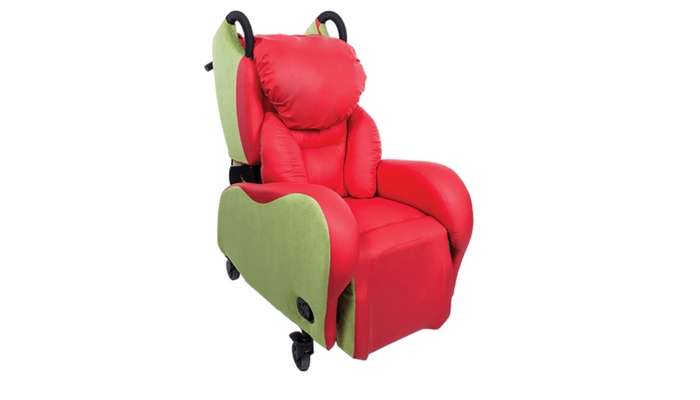
This paediatric sized Legacy care chair can be changed over time to keep up with the child’s needs.
Pommel Seats & Ankle Huggers
Pommel seats are used in adult-sized care chairs, but they’re commonly found in children’s care chairs as well. This is because pommel seats are shaped to help stop children from sliding out of a chair when moving around.
Pommel seats can also help with maintaining a good linear position of the lower limbs. Children are sometimes more prone to adduction which can lead to the development of a lean.
With paediatric clients, you may choose a pommel seat to keep the legs separated, therefore creating stronger postural positioning in the pelvis.
Similarly, you may want to include Ankle Huggers in your client’s care chair to provide additional stability down to the feet.
These sit down at the footplate level and cradle the child’s ankles, providing a stable base for their feet. This will help to keep their legs in a comfortable and supportive position that promotes good posture.

Hip adduction can usually be tackled with the use of a pommel seat.
These are a few things to think about when specifying a care chair for a child. You may also want to think about choosing a durable fabric that will wear over a longer period of time, or you may choose a fabric that can be wiped clean (because kids can be messy).
Either way, if you other queries about paediatric care chairs, then feel free to get in touch with our team. You can also download our free seating assessment eBook, which gives a step-by-step guide for measuring for care chairs.





